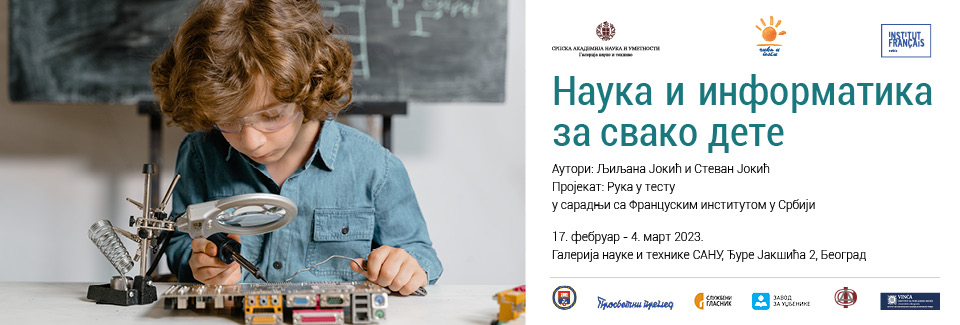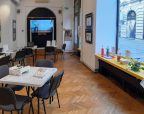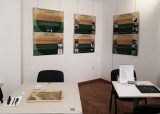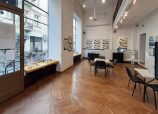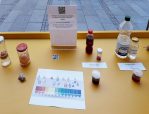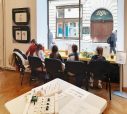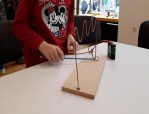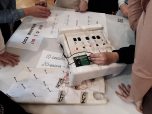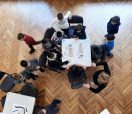17 FEBRUARY – 4 MARCH 2023
Authors: Stevan Jokić and Ljiljana Jokić
This interdisciplinary exhibition, accompanied by workshops, features resources which teachers and parents can use in science and IT education of preschool to high-school children, as well as in the work with disabled children, by the application of research procedures created thanks to ’Hands-on’ (La main à la pâte) approach, and the cooperation of numerous institutions, some of which are as follows: The French Academy of Sciences, Serbian Academy of Sciences and Arts, University of Belgrade, Vinča Nuclear Research Institute, Interacademy Panel (IAP), La main à la pâte Foundation, French Institute in Belgrade, Belgrade Society of Physicists, as well as EU-FIBONACCI and EU-SUSTAIN projects.
The project Hand-on (La main à la pâte) is a project that Georges Charpak (Nobel Prize in Physics 1992) and the French Academy of Sciences launched in 1996, with the aim of improving the quality of science and technology teaching in a school setting. Professor Stevan Jokić is a founder of a Serbian branch of this project and has been cooperating for a number of years with a slew of institutions in Serbia, to introduce teachers and children to all available resources and possibilities.
The exposition at the SASA Gallery of Science and Technology includes posters realized within five mutual exhibitions-workshops of the Hands-on project and the French Institute in Belgrade, a multitude of books dealing with current topics in science, technology and IT education, and they are helpful to primary and secondary school teachers at orientation and education using STEM and STEAM (Science, technology, engineering /art, and mathematics) approaches; and a Youtube multimedia presentation from Nauka and informatika za sve channel, with a lot of materials and books being available to visitors in e-form for a free download.
Visitors will have an opportunity to perform simple experiments by themselves, and observe and do research in various scientific and technology fields. They will be able to learn how to make an inexpensive robot, use a digital microscope connected to a computer, as well as how to use a mobile phone and a tablet as universal measuring instruments.

